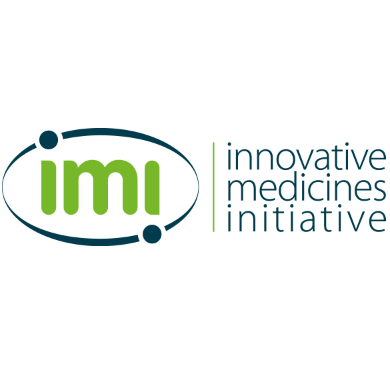
Central repository of digital pathology slides to support the development of artificial intelligence tools
Date de clôture : 26 mars 2020
APPEL À PROJET CLÔTURÉ
APPEL À PROJET CLÔTURÉ
Soins de santé
Équipement médical
E-health
Applications informatiques
Innovation & Recherche
Société numérique
Internet des objets (IoT)
Santé mentale
Although pathology is the cornerstone of the workup of many diseases such as cancer, autoimmune diseases, and transplant rejection, it still relies heavily on the subjective interpretation of a histology sample by a qualified pathologist who captures observations and conclusions in a report. Once the observations are captured, the slides are archived and only the pathologist’s report and diagnoses (considered as raw data in good laboratory practice (GLP) nonclinical studies) remain accessible. Therefore, significant information from the histology slides is no longer easily available. This hinders the discovery of new clinico-pathological entities that are relevant to patients’ prognosis and treatment.
The recent developments of high-throughput slide scanners offer a possibility for making the entire information contained in the millions of glass slides produced every year, available for search. Ensuring storage and access to digital slides will overcome the current limitations to accessing and sharing pathology material together with the associated metadata. It will facilitate case consultation, help identify sub-types of diseases, assess the translatability of nonclinical safety observations and animal models, and thereby rationalise the design of clinical trials and the use of animal models.
Scope:
The overall scope of the Call topic is to collect, host and sustain virtual slides along with associated data and to support the collaborative development of artificial intelligence in pathology.
The funded action will also address the regulatory, legal and ethical challenges associated with the collection, sharing and mining of the virtual slides.
Objective 1: Sustainable infrastructure
To deliver the infrastructure hosting several petabytes of digital slides and making the data accessible for research. It represents the hardware layer of the funded action and could take the form of a data centre, either centralised or decentralised. The key factors of success for this objective are the storage capacity and the possibility to exchange rapidly large amounts of data.
Objective 2: Data
To compile digital histopathology slides from nonclinical safety studies, as well as from clinical series needed to populate the initial version of the repository, and contribute to developing tools and artificial intelligence models. The key factor of success is the diversity of lesions, tissues, and species while providing sufficient sample sizes. In addition, the slides will be made publicly available for the development of artificial intelligence in pathology in line with the sustainability model described in objective 1.
Objective 3: Tools
To deliver a mechanism of an honest broker (see ‘Expected key deliverables’ and ’Suggested architecture of the full proposal’ sections) by developing a software ensuring the optimal and secure contribution of clinical and nonclinical material. Efforts will also be undertaken to propose a unified open digital slide format and tools to search, access, upload, register, download, view and homogeneously annotate information. In addition, AI models and tools, such as assistance to general diagnosis, screening for slides for lesions, and content-based image retrieval will be developed at a later stage of the funded action.
Objective 4: Regulatory framework
To advance the regulatory framework around the utilisation of digital pathology slides for nonclinical safety testing, evaluation of clinical trials and dissemination/discussion of difficult clinical cases. This will accelerate the adoption of roadmaps for the qualification of the usage of digital slides for peer-review or primary slide reading, as well for the development of artificial intelligence based tools for pre-screening and assisted diagnosis. This objective should be achieved by building on already existing and ongoing interactions and efforts between health and regulatory authorities, and professional societies.
Expected Impact:
Applicants should describe how the outputs of the project would contribute to the following impacts and include baseline, targets and metrics to measure impact:
- Catalyse research in digital pathology by providing a unique combination of animal and human histopathology. By offering the first complete coverage of tissues and elementary lesions, this repository will offer an unprecedented opportunity to build holistic models and allow generic mining of histopathology, irrespective of a particular tissue or indication.
- Enable the development of artificial intelligence tools for rare diseases and uncommon conditions, which currently are left out of the models because of the paucity of cases.
- Help identify sub-types in common diseases, possibly unveiling new clinico-pathological entities amenable to specific therapeutic interventions. It could also contribute to assessing the translatability of animal models for disease modelling, safety and efficacy studies, and thereby rationalise the design of clinical trials and the use of animal models. Ultimately, it should accelerate and improve patient treatment and management, thereby enhancing patient health along with the more efficient use of healthcare resources.
- Clear the way for the use of digital slides in nonclinical safety and clinical consultation, and facilitate the approval of AI-based tools for slide screening and assisted diagnosis.
- In the long term, the repository delivered by the consortium will be maintained through sustainability mechanisms defined by the consortium and will provide the community with an infrastructure to host additional digital slides (e.g. associated with the publication of case reports, cases series for disease stratification and clinical trials).
Applicants should indicate how their proposal will impact the competitiveness and industrial leadership of Europe by, for example engaging suitable SMEs.
Deadline: 26 September 2019 17:00:00 Brussels time
2nd stage Deadline: 26 March 2020 17:00:00 Brussels time
Lien officiel : Disponible pour les utilisateurs enregistrés




S'il vous plaît Se connecter pour voir cette section